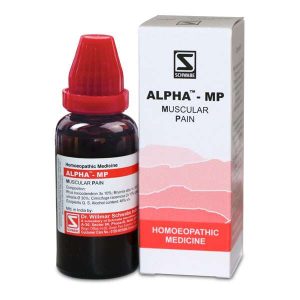
Rheumatic pains
-
-18%
 Rated 4.83 out of 5 based on 6 customer ratings(6)
Rated 4.83 out of 5 based on 6 customer ratings(6)₹135.00₹110.70 You Save: ₹24.30 (18%)Add to cart
Showing the single result
Rheumatic pains are not a part of normal aging. It appears in response when the immune system of the body goes haywire and starts attacking the body’s tissues. Due to this, there occurs swelling and stiffness in the affected joint. It is a chronic, often of an intermittent character caused by infectious diseases.
Rheumatic pains affect joints, tendons, ligaments, bones, and muscles. Various arthritic disorders are associated with rheumatic pains. These disorders are referred to as rheumatism or musculoskeletal diseases.
Common painful rheumatic disorders are
- Bursitis, tendinitis
- Osteoarthritis
- Rheumatoid arthritis
- Lupus
- Ankylosing spondylitis
- Psoriatic arthritis
- Relapsing polychondritis.
- Sjogren syndrome
- Gout, inflammatory arthritis, pseudogout
- Scleroderma
- Behcet’s disease
- Stills disease
- Infectious arthritis
- Reactive arthritis
- Juvenile idiopathic arthritis
- Polymyalgia rheumatics
Symptoms
- Pain and discomfort in the vicinity of one or more joints
- Limited motion in a joint or joints
- Crunching sound while walking.
- Change of gait due to pain and stiffness
- Inflammation of the affected part
- Feeling of warmth in the affected joint
- Stiffness in various joints
- Fatigue and lethargy
- Unexplained weight loss
Causative Factors
- Autoimmunity
- Infectious diseases
- Environment toxins and pollution
- Cigarette smoke
- Women are more prone than men
Why rheumatic diseases are very painful?
Physiology of the process: It is a destructive disease of joint and connective tissue. The infection causes inflammation in the joint tissue. Due to inflammation of longer duration tissue are incapable of producing lubricating fluids for the joint. This causes wearing off and deformity in the joint by loosening the ligaments and eroding the cartilages and bones. There is tenderness in joints and localized pain throughout the affected musculoskeletal system.
Diagnosis
Blood tests help in the early screening of diseases, prognosis and in choosing the mode of treatment. These blood test rules out the infection and the causes of rheumatic pains. Suggested Diagnostic tests for pain in musculoskeleton or Rheumatic disorders:
- Anti-CCP antibodies,
- Rheumatoid factor antibodies,
- ESR (Elevated erythrocyte sedimentation rate),
- C-reactive protein (CRP),
- Test for anemia (to narrow down the diagnosis in case of chronic illness),
- Imaging tests like X-Ray, MRI, CT scan (to track the progress of disease and get a good picture of the affected system).
Preventive measures and self-care
- Vitamin and mineral supplements: Vitamin D is essential for the absorption of calcium and normal bone growth. Vitamin E increases the effectiveness of medicines and boosts the immune system. Mineral supplements maintain the physical nutrition of the body.
- Folic-acid and omega-3 rich diet Apart from providing nourishment, these help to ameliorate stiffness in the joints.
- Turmeric and bromelain act as a natural pain reliever.
- Stay active- Regular exercise with a diet regimen helps to reduce the flare. Apart from boosting mood and increasing mobility it also improves joint function and flexibility. It helps in the reduction of weight toning up the body muscles and focuses on the increasing strength of the body. Exercise ease the pain improves blood circulation and maintains overall health.
Treatment
- Conventional treatment: Initially analgesics (paracetamol and NSAIDs), ibuprofen, naproxen or stronger analgesics are used to numb the pain. Some antibiotics are also prescribed to deal with the infection. The primary goal is to settle the pain and inflammation with assuring optimal functions of the affected joint/joints.
- Heat and cold therapy: It is an effective but temporary mode of treatment to get relief from the pain. Moist heat (warm shower) or dry heat(heat pad) can be applied to the joint. Heat therapy increases circulation. Cold applications like ice packs reduce swelling. Whether to use hot therapy or cold therapy depends on the type of rheumatoid arthritis affecting the joint/joints.
- Massage: It helps in improving the circulation by gently massaging or stroking the painful muscle. It brings warmth to the area.
- Joint immobilization: Sometimes it is incumbent to withhold the joint to ensure further injury. Splinters or braces help to immobilize the joint, assists in rest, relieve excess stress and restricting movement.
Homeopathy and Rheumatic pains
Alpha-MP is the foremost resolution for pains of rheumatic origin. It provides relief from muscular tenderness and soreness. Joints become hot, sore or numb with flared redness all over. Covers spasms of muscle, cramps, and rheumatism. Brings down the inflammation, redness, and stiffness in the musculoskeleton (periosteum, synovial membranes, and other muscle tissues). It is effectively used in cases of fibromyalgia and frozen shoulder. Subsides any swelling in fingers, wrists, toes, and ankles. Living with chronic pain, clumsiness and general discomfort is very torturous and challenging even performing regular tasks becomes difficult. The pain is very annoying and of tearing character increases with motion. It may be intermittent. Nevertheless, the management of symptoms along with homeopathy helps in living a prolific life. Homeopathic treatment helps to manage the disease with no or minimal side effects. It helps in the long-lasting alleviation of symptoms of rheumatic background. Although it is difficult to reverse the pathology and destruction it has shown tremendous success in the management of pain, swelling, and stiffness of the affected joint.
Blog Post


Effects of Diabetes, Smoking, and Other Factors on Sexual Health


Plant-based Protein vs. Animal Protein: Which is Better for Your Health?




























